AMAZON multi-meters discounts AMAZON oscilloscope discounts
There are many different probes. We have a.c. probes, r.f. probes, peak-to-peak probes, demodulator probes, detector probes, voltage-doubler probes, high-voltage probes, crystal probes, vacuum-tube probes, and numerous other types. Most of these names refer to the same kind of probe. Thus a peak-to peak and a voltage-doubler probe are identical. A demodulator probe and a detector probe are the same. The name given to a particular probe may be decided by the manufacturer of the probe, by the manufacturer of your v.t.v.m. or scope, or by you personally. Actually, all probes may be considered as either rectifying, divider, isolating, or direct probes. All probes can be classified under these four general headings.
Test instruments are not used alone. They must, in some fashion or other, be connected to the radio or TV set being tested.
Many worth-while articles and books have been written about the v.t.v.m. and the scope, but to get the most out of these instruments you must be equally familiar with various probes and cables. Although a probe is a detachable item and is often considered separate and apart from the test instrument, actually it is nothing less than an extension of v.t.v.m. or scope circuitry.
There are many instances in which the use of a probe is an absolute necessity. This is the case when you want to look at waveforms in TV sets and you do not want the connecting link (the probe) to add or subtract anything from the wave. Aside from this important fact, probes have many decided advantages. For example, a probe can be used to extend the existing range or scale of a v.t.v.m. A high-voltage probe permits you to use your v.t.v.m. to test a picture-tube second-anode voltage, or any d.c. voltage higher than the usual two- or three-hundred encountered in a TV set. Similarly, properly designed probes will permit you to make measurements of r.f. voltages having frequencies up to several hundred (or more) megacycles.
The whole idea of a test instrument is to be able to measure a voltage or examine a waveform without reducing that voltage (or adding to it) or altering the waveform in any way. It is not enough just to connect your instrument to the circuit under test. This must be done in such a way that the circuit is not loaded and that the voltage appearing at the point of test is not changed.
Finally, probes help speed trouble shooting by enabling your test instruments to do the job for which they were designed.
Advantages of detector probes A detector probe is a necessity. Such a probe allows you to put your v.t.v.m. or scope right across the test points in a radio or TV set. A detector probe will reduce the loading effect of your test instrument, will keep the circuit you are measuring steady and stable (will not throw it into regeneration or oscillation). A properly designed probe will enable you to make measurements without worrying about stray magnetic fields such as hum or noise (these are actually voltages which can interfere with. your tests). ·while we do not worry too much about these factors at audio and low radio frequencies, they do become important just as soon as we get into circuits that are characterized by high-frequency operation (i.f. stages in TV sets, video-amplifier circuits, front ends, etc.). Using detector probes Signal tracing in TV receivers differs in several respects from signal tracing in radios. First, the range of frequencies found in TV circuits is very much broader than in radio. Second, the supply and signal voltages in a TV chassis cover a much wider range than in radio work. Third, the circuit impedances in TV receivers range from less than 1 ohm to as high as 10 megohms or more.
Fourth, signal tracing in radios is usually concerned with sine wave signals - such signals are the exception rather than the rule in TV. TV circuits often operate with two signals present at the same time, such as the FM sound and AM picture signals or 60 cycle vertical-sync and 15.75- khz horizontal-sync signals.
The operating frequencies in the r.f., i.f. and - under some conditions-in the video amplifier of a TV receiver are too high for the usual service scope to display directly. For this reason, signal tracing in the r.f., i.f. and video amplifiers requires demodulator, or detector, probes, which rectify the modulated wave form and recover the modulation envelope.
This can be illustrated by considering a modulated r.f. carrier whose frequency is 55.25 mhz, while the modulation envelope rep resents a frequency (at a particular instant) of perhaps 1,000 cycles. Here the demodulator probe makes it possible for the scope to display the 1,000-cycle output, although, of course, the scope cannot reproduce the modulated 55.25-mhz carrier.
Fig. 101 shows what the technician will see when a sine wave is removed from the modulated r.f. carrier through the use of a demodulator probe.
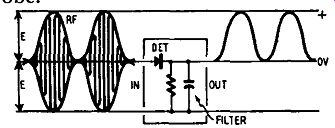
Fig. 101. A modulated wave can be rectified by a crystal-detector probe. The
low frequency wave can be seen on the scope.
When used in a high-frequency circuit, the crystal demodulator probe separates the modulating signal from the r.f. carrier. The lower-frequency wave, or modulating signal, is then fed to the vertical input of a scope. when the scope is set up for observations on a.c., the waveform seen on the scope tube will be centered vertically on the zero axis of the screen. If the scope is set up for observations on d.c., the waveform will be displaced vertically, the amount of displacement being proportional to the amount of d.c. resulting from rectification of the r.f. carrier.
Demodulator probes are usually built around crystal-diode detectors, because these devices are compact, have good frequency response and do not require a source of heater voltage. Crystals used in popular commercial crystal demodulator probes are units such as the 1N32, 1N34A and 1N48.
Practical crystal demodulator probes usually have moderate sensitivity, an input capacitance approximately equal to that of a picture tube and a time constant suitable for demodulating carrier frequencies which have been modulated by frequencies as low as 60 cycles.
Series and shunt detectors Both series and shunt type detectors (see Fig. 102) are used in commercial probes, but the series type is the more sensitive for signal-tracing purposes. The series probe is the least suitable for video-amplifier testing and will seriously distort the sweep-output waveform.
Shunt type probes are generally found most suitable for signal tracing as well as for video-amplifier checking. Both series and shunt type probes 4se series resistors to prevent the scope input capacitance from shunting the crystal detector and reducing the output. The circuit for a signal tracing, shunt-type demodulator is shown in Fig. 103. An exploded view of a typical commercial probe appears in the photo (Fig. 104). The specifications for this probe are listed in Table 1.

Fig. 102. Series (left) and shunt (right) detectors. The series resistor prevents
the scope input capacitance from shunting the detector and reducing the -out
put.

Table 1-CHARACTERISTICS OF DEMODULATOR PROBE
Frequency Response Characteristics:
R.F. Carrier Range ...................... 500 khz to 250 mhz
Modulated- Signal Range . . . . . . . . . . . . . . . . 30 to 5,000 cycles Input Capacitance (Approx.) ........................ 2.5 µµf
Equivalent Input Resistance (Approx.): At 500 khz ................................ . At 1 mhz ................................. . At 5 mhz ................................. . At 10 mhz ................................ . At 50 mhz ................................ . At 100 mhz ............................... . At 150 mhz ............................... . At 200 mhz ............................... .
Maximum Input: 25,000 23,000 21,000 18,000 10,000 5,000 4,500 2,500 ohms
A.c. Voltage .............................. 20 r.m.s. volts 28 peak
D.c. Voltage . . . . . . . . . . . . . . . . . . . . . . . . . . . . . . 500
Crystal probe requirements

Fig. 103. Circuit of signal tracing demodulator probe.
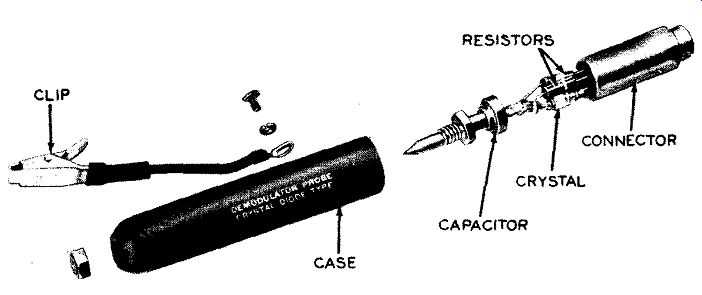
Fig. 104. Exploded view of crystal diode type demodulator probe. The characteristics
of this probe are given in Table l on page 10.
A crystal probe used with a scope must possess several special features. Unlike a probe for use primarily with a v.t.v.m., it must rectify the r.f. component of the signal and it must pass the modulation envelope of the signal into the vertical amplifier of the scope. Accordingly, a scope probe must have certain filter characteristics determined by the service applications for which it is designed. For example, for use in video-amplifier adjustments, the probe must not only completely rectify and filter video frequencies from 100 khz to 4.5 mhz, but it must also pass, undistorted, the square waves which form part of the composite video signal.
For application in i.f. signal tracing, the probe must have a relatively high input impedance over a frequency range covering approximately 20 to 45 mhz. For application in testing the output of a conventional sweep generator, the probe must be flat up to 225 mhz.
Because the probe must be used in cramped spaces, it must be well insulated to avoid shorts. Such a probe is used to display a.c. waveforms in the presence of relatively high d.c. voltages and hence suitable high-frequency blocking capacitors are needed in its construction. The crystal diodes in such probes must not only have a high front-to-back ratio, but must also accommodate reasonably high a.c. signal voltages without loss of sensitivity or burn-out.
The crystal probe should be designed for demodulation of complex waveforms such as vertical blanking pulses and other pulses normally encountered in TV receivers. This is accomplished by the proper relationship between the resistive and capacitive components in the probe. Use of a selected high-impedance crystal diode and short lead lengths will make the probe useful as a demodulator at frequencies up to 1,000 mhz.
Like all probes, the demodulator should be shielded to prevent erroneous response due to body capacitance. Shielding is also needed to avoid stray fields which might be present near the probe head as a result of the strong 60-cycle and 15.75- khz magnetic fields surrounding a TV chassis. Signal tracing in a TV i.f. amplifier with a crystal demodulator probe is illustrated in the photo (Fig. 105).
Input voltage to the demodulator probe
The amount of r.f. input voltage to the demodulator probe is determined by the type of crystal used in the unit. For a probe using a IN34A the maximum r.f. voltage input is approximately 20 r.m.s. or 28 peak volts. The probe will often be placed in a circuit having both d.c. and a.c. voltages. Generally speaking, you should not put the probe at any point having a potential higher than 250 volts d.c. If it is necessary to measure higher values of r.f. voltage than those ordinarily found in radio and television sets, then a vacuum-tube type demodulator probe should be used.
The crystal demodulator probe does have the advantage of not requiring filament voltage, is not as bulky as the tube type demodulator probe and does not have contact potential. For a description of contact potential, what it is and how it is minimized or eliminated, turn to the section on vacuum-tube probes, Section 10.
Input capacitance of the probe
A considerable portion of the utility of a crystal demodulator probe is determined by the input capacitance of the probe and the frequency at the point of test. The amount of probe input capacitance becomes increasingly important as the frequency goes up. An input capacitance of 20 µµf, not too serious at audio frequencies, is intolerable at the frequencies of TV i.f. stages. where the probe has an input capacitance of less than 3 µµf, it can be used in critical r.f. circuits without too great a detuning effect.
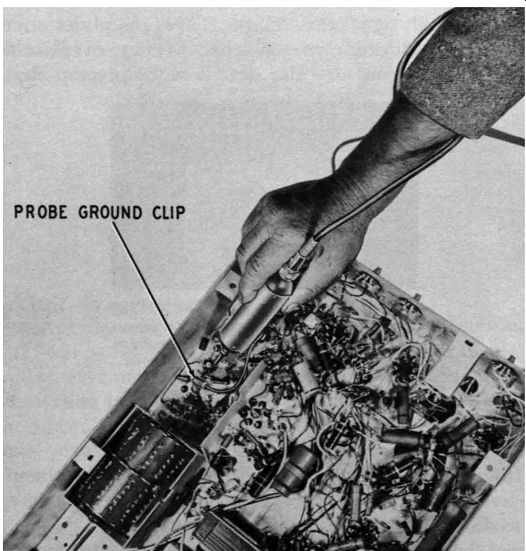
Fig. 105. Signal tracing in a TV i.f. amplifier with a crystal demodulator
probe. Note probe ground clipped to chassis as close as possible to signal
take-off.
If, for example, the crystal demodulator probe has a shunt capacitance lower than that of a picture-tube grid circuit, it can be connected to the output of a video amplifier without seriously disturbing the circuit.
Which probe?
The specific probe needed for any trouble-shooting job depends on the type of signal to be traced. This, in turn, depends on which circuit of the receiver is under test and whether or not the receiver can supply its own test signal.
For example, in servicing a TV receiver, if a normal TV station signal can be traced, the video-signal waveform displayed on the scope screen should look like Fig. 106. (In this case the scope sweep was set at 60 cycles, with internal sync, to show one vertical blanking and sync pulse.) On the other hand, if the TV signal is weak, the scope trace may be too small to be useful. The only solution here is to substitute an AM generator for the TV station, and drive enough signal through the TV i.f. amplifier circuits to give a usable indication on the scope without overloading the receiver circuits. You may also need a scope preamplifier when working in low-level circuits. Such an amplifier is described in this section.

Fig. 106. Scope display obtained when signal-tracing i.f. amplifier with crystal
demodulator probe. The pattern consists of the reproduced TV station signal.
Even with comparatively strong generator signals, excessive hash from stray fields around the TV chassis may obscure the scope trace unless the probe is provided with a shielded output cable as shown in Fig. 107.
Crystal demodulator probes can be given various response characteristics, either for better waveform reproduction or greater sensitivity or to provide a better impedance match for certain tests.
As an instance, the video waveform in Fig. 106 can be seen in better detail (Fig. 108) by using a probe with less sensitivity but better frequency response. Fig. 108 is a much more accurate picture of the vertical blanking interval. However, the TV technician is usually more than willing to sacrifice fidelity of wave form to get increased sensitivity for probing in low-level circuits like the mixer and first i.f. stages.
A crystal probe designed for maximum sensitivity may be ideal for simple signal tracing, but it will not be suitable for checking video-amplifier response, or observing critical waveforms in sweep and high-voltage circuits. Since the technician usually does not want to invest in several specialized probes for different applications, commercial probes generally represent compromise designs which will meet the greatest number of application requirements in a satisfactory manner.

Fig. 107. Probe and output leads must be shielded to prevent pickup of un
desired signals.
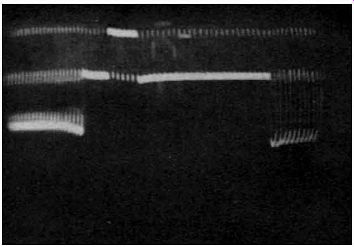
Fig. 108. The vertical-blanking interval of Fig. 106 shown in greater detail.
A crystal probe which is to be used for video-amplifier adjustments, as well as for signal tracing, must be able to display 60 cycle square-wave modulation on the scope screen without appreciable distortion. The ability of a probe to pass a square wave without distortion depends upon the values of resistance and capacitance in the probe, the capacitance of the connecting cable and the input capacitance of the scope. However, you will find it much easier if you will consider the entire probe, from its tip to the input of the scope, as a single resistor and capacitor. The ability of the probe to pass a square wave without clipping depends upon the speed with which this capacitor will charge and discharge. This is determined by the size of the capacitor (its capacitance) and the amount of resistance. The smaller the capacitance and the lower the value of resistance, the faster will the charge and discharge actions take place.
Building a probe is a compromise. While we want the values of R and C to be small, fixed values of cable and scope input capacitance are design limiting factors. Furthermore, R1 (in Fig. 109) cannot be made too small, since it will then permit r.f. to get into the scope. If the resistance of R2 is seriously decreased, the Fig. 109. Probe circuit RC time constant crystal will be shorted or else the signal voltage developed across R2 may be made too weak to feed into the vertical input of the scope.
The product of resistance and capacitance is known as a time constant, and is expressed by the very simple formula, T = R x C. With the resistance (R) expressed in megohms, the capacitance (C) in microfarads, the time (T) is in seconds. The time constant is independent of the amount of voltage applied. For example, a capacitor of 0.05 µf connected to a 2 -meg-ohm resistor will charge in 0.10 second (T = 2 x 0.05). The capacitor actually charges only to 63.2 % of the applied voltage; but for all practical purposes, the capacitor is considered to be fully charged.
[[• As seen in Fig. 109, the limiting factor in the ability of a crystal probe to display a modulation envelope on the scope screen is usually determined by the time constant of the scope input circuit, (Cc + C8 ) x (R1 + R2). The total input capacitance Cc + C8 charges through RI and discharges through R1 + R2. Unless this charging and discharging can take place with sufficient rapidity, there will be negative peak clipping of the waveform displayed on the scope screen. The time constant can be reduced by decreasing the value of Cc. Cable capacitance Cc is usually much larger than scope input capacitance C8
• In a single time-constant interval, the cable can charge up to 63.2% of the peak value of a square wave or, having been previously charged, will be able to discharge in a single time-constant interval to 36.8% of the peak value of the initial charge. ]]
Scope preamplifier

Fig. 110. Circuit of preamplifier that can be used with a de modulator probe
for tracing in low level stages. Gain characteristics are listed in Table 2,
page 18.
Because of the relatively low sensitivity of average service type scopes, most of which require a minimum input of 20,000 micro volts, a preamplifier must be used in conjunction with a demodulator when tracing waveforms in TV tuners, low-level i.f. stages, TV boosters, etc., unless an unusually strong signal is available at the antenna terminals. Such an amplifier should have a very low hum level and a frequency response essentially flat from 30 to 500,000 cycles, with a gain of at least 25. Another point with regard to the preamplifier (often overlooked but a must for good TV tracing) is that the amplifier must have minimum phase shift.
It is true that an alert technician can overcome the handicap of a weak signal by substituting the output of a sweep generator for that of the television signal. Although a sweep generator can be used for this purpose, and although it will show the gain and frequency response characteristics of the tuner and i.f. amplifier, the composite video signal of the television station also shows sync pulses and video information.
The amplifier shown in the diagram (Fig. 110) is well within the described specifications. Because of the difficulty and expense involved in building a good compensated attenuator, no gain control is included in the circuit. Instead, the amplifier depends on the compensated vertical attenuator in the scope. This amplifier will handle up to 0.5 r.m.s. volt without distortion. When analyzing signals having an r.m.s. value greater than this, flip switch S1 to the bypass position. The signal will then be coupled directly to the scope input.
The gain characteristics of the scope preamplifier are shown in Table 2. All voltages listed are r.m.s. values.
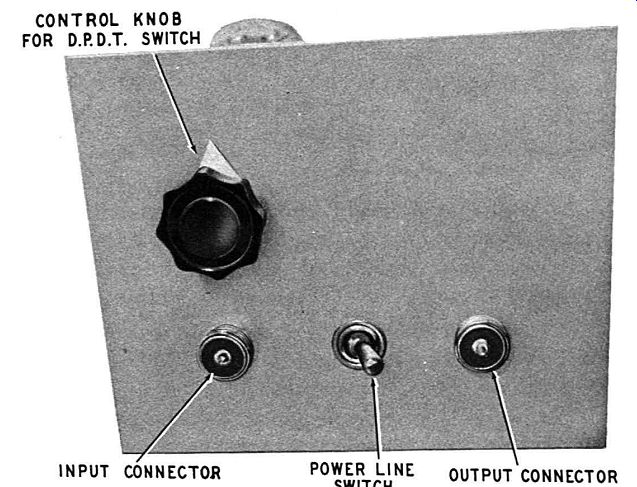
Fig. 111. Front panel view of the preamplifier. Turn the power switch on,
the control knob to left or right, and the unit is ready without further adjustments.
Table 2-GAIN CHARACTERISTICS OF SCOPE PREAMPLIFIER
Frequency E_in E_out Gain
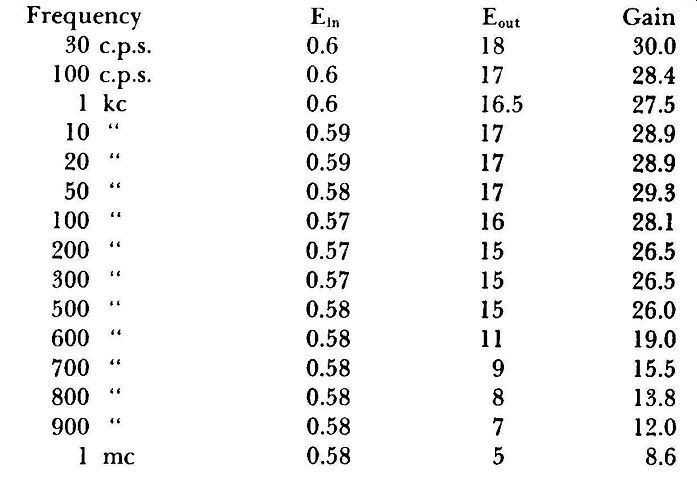
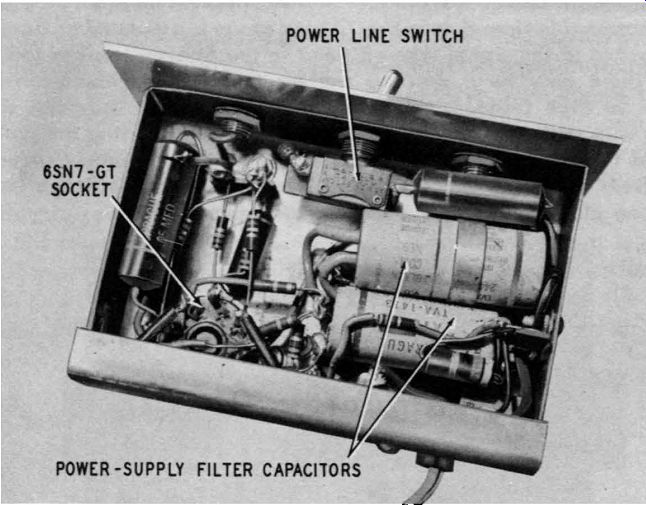
Fig. 112. Under-chassis view of the preamplifier. Compact arrangement means
short leads, quick assembly.

Fig. 113. Top view of the preamplifier. Either an open- or shielded-type power
transformer can be used. Amplifier uses but a single tube.
The photographs in Figs. 111 and 112 show front and bottom views, respectively, of the preamplifier, while a rear view is illustrated in Fig. 113. The simplicity and compactness of the pre-amplifier is evident in Fig. 114, which shows the preamplifier being used with a crystal probe and a scope in TV servicing.
Grounding the probe
Technicians sometimes overlook the importance of grounding the probe correctly. Note that in Fig. 105 the probe is grounded as closely as possible to the signal take-off point in the receiver. Unless this is done there may be a spurious pattern because of ground-current effects at high frequencies. Many technicians think they can dispense with the annoyance of connecting and disconnecting the probe ground in i.f. signal tracing simply by running a permanent ground lead from the scope case to the receiver chassis. In practice, a lead this long almost invariably causes erratic operation.

Fig. 114. Even with high sensitivity lab scopes it is necessary to use a preamplifier
when tracing weak signals in low level TV i.f. stages.
Scope or v.t.v.m.?
A crystal demodulator probe can be used with either a scope or a v.t.v.m. While both instruments have their place on a well equipped service bench, the scope does have some advantages in television repair work.
In a television set, there are a number of circuits designed just for the job of producing complex waveshapes or amplifying them.
These wave shapes are asymmetrical. This means that the positive portion of such a wave is not a duplication or mirror-image of the negative half. A sine wave is a symmetrical wave. So is a square wave. In waves such as these, there is a very simple relationship between the average, r.m.s. (effective) and peak values.
This is not true of the complex waves found in TV sets.
Both the amplitude and shape of TV pulses are important. In TV, the operations of triggering, scanning and synchronization depend upon the peak-to-peak amplitudes of waveforms, a few of which are shown in Fig. 115. By using a properly calibrated scope, you can measure such voltages and observe waveshapes simultaneously. A v.t.v.m., on the other hand, whether calibrated in terms of r.m.s. or peak voltage, is based upon the sine wave; hence readings of other types of waveforms do not necessarily reflect true values.

Fig. 115. A properly calibrated scope will enable you to measure the amplitudes
of these TV waveforms.
The crystal demodulator probe uses a single crystal: it is a true half-wave rectifier. This means that the crystal will rectify only one half of the input waveform and will reject or block the other half. This is perfectly satisfactory if you are measuring any type of modulated wave, since the positive and negative portions of the modulated wave will be approximately the same in shape and amplitude. This is not true of the pulses used for triggering, sync and deflection in TV sets. Do not use a half-wave type, crystal de modulator probe (or half-wave vacuum-tube diode) to measure the peak-to-peak voltage of such waveforms. Technically speaking, you could use the half-wave demodulator for such measurements, but there are a number of very serious factors that prevent practical application. For peak-to-peak tests with a demodulator probe, you would have to make a measurement and then turn the crystal around so that you could measure the other half of the wave. Aside from the fact that it is inconvenient and impractical to do this, the impedance of a crystal is high in one direction, low in the other. By reversing the crystal (turning it around) you will change the characteristics of the probe and will seriously load the circuit under test.
Crystal probes of any type should be used only for measurements in radio-frequency, intermediate-frequency, audio or video amplifier stages of radio and TV sets. It is dangerous to use crystal probes in sweep circuits of TV sets, since most pulse voltages are much higher than the maximum operating voltage of the crystal. Contact with such voltages will immediately burn out the crystal.
You can make correct peak-to-peak measurements with a voltage-doubler vacuum-tube probe. This type of probe is described in Chapter 10.

Fig. 116. Waveform with two components. A v.t.v.m. can indicate the voltage
of the larger component, but does not reveal the presence of the smaller one.
There should never be any question in your mind as to which test instrument you should have on your service bench, v.t.v.m. or scope. Very definitely you should have both. However, it is not enough just to buy the instruments. You should know exactly what each one can or cannot do. As an example, consider the waveform shown in Fig. 116. A v.t.v.m. indicates the voltage of
the larger component, but does not reveal the presence of the smaller one. Examine also the typical beam-power tube circuit shown in Fig. 117. A crystal probe and v.t.v.m. could be used to check the gain of the stage. Suppose, however, the screen bypass capacitor is open as indicated by X on the circuit diagram. This means that the screen will try to act as a plate, and a signal voltage will be developed across the screen-dropping resistor. A scope placed across the screen-dropping resistor will show the presence of the signal, revealing inadequate bypassing, or, as in this case, no bypassing at all. This would not be indicated by a v.t.v.m.
While a single-diode scope type probe can be used with a v.t.v.m. as well as with a scope, its performance will differ from that of a probe designed for v.t.v.m. use only. If the output of the probe is connected to the d.c. volts input of the v.t.v.m., the scale of the v.t.v.m. will then indicate positive peak (not peak-to-peak) volts for a.c. signals having frequencies between 100 khz and 200 mhz. If a modulated r.f. signal is applied to the crystal probe, the v.t.v.m. will indicate the positive peak voltage of the modulated wave. The probe may load high-impedance circuits, especially at high frequencies, and tests should be made in low-impedance circuits whenever possible.
Interchangeability of probes
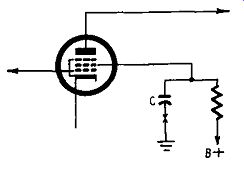
Fig. 117. Beam-power tube circuit with open screen by pass capacitor.
Although a particular probe may have a connector enabling you to fasten the probe to your v.t.v.m. or scope, it does not follow automatically that the probe is suitable for use with your particular test instrument. This is true even though you may have noted from the various circuits given in this section that most crystal demodulator probes have fairly similar design.
You can get probes in any one of three different ways. You can make the probe yourself. If you do, then you must consider the input characteristics of your v.t.v.m. or scope. Since a probe is a comparatively inexpensive test device, most service technicians buy theirs from companies that make a specialty of manufacturing them. Usually enough information is supplied with such probes to enable you to decide whether or not the probe can be used with your test instruments. Finally, some test-instrument manufacturers supply probes with the testing units they make.
Naturally, in such cases you need have no concern about the suitability of the probe to the instrument.
Although in this section we have covered crystal detector probes only, demodulation (or detection) can also be had with a vacuum tube. Vacuum-tube demodulator probes are also known as r.f. probes. There are advantages and disadvantages for each probe, crystal or vacuum tube. Crystal probes are much more compact, re quire no filament heating power, are free from contact potential.
There is some signal loss with either crystal or vacuum-tube diode type. However, there is signal gain with a vacuum-tube probe that uses a triode or pentode. The maximum peak voltage that you can apply to a crystal is less than 30. The vacuum-tube probe can handle much higher voltages. While vacuum-tube diodes permit you to use higher input signal voltages than crystals, constant progress is being made in the field of semiconductors (crystals) so that ultimately this advantage may be overcome.
The vacuum tube is a much more reliable unit over long periods of operation, since it is not as temperature-sensitive as a crystal.
Also, it is possible to design vacuum-tube probes which have a higher input impedance than do crystal units.
Both types of probes, crystal and vacuum tube, are in use today.
It makes little difference which you use just so long as you recognize the limitations of each. In any case, whether you use a crystal or vacuum-tube diode, the function is the same--rectification of the input signal.
(Note: This guide based on the 1955 book, Probes)
AMAZON multi-meters discounts AMAZON oscilloscope discounts